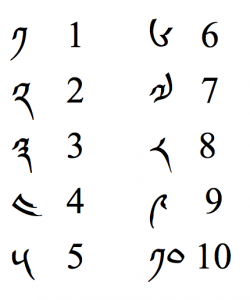Tibetans are not a single ethnic and linguistic group. Thus, the Khampa, the inhabitants of the Kham province, in the eastern part of the Tibetan region, differ from the nomads of Western Tibet. The Tibetan language is divided into dialects, with u-ke, the dialect of the province of Wu, considered spoken throughout Tibet.
A unified Tibetan writing system and translate tagalog to english was developed in the middle of the 7th century AD. NS. modeled on the Indian alphabet common in Kashmir. Traditionally, there is a distinction between the spoken language, which Tibetans speak in everyday life, and the literary Tibetan, which has modern and classical variants. Only 25 percent of Tibetans living in China are literate.
If you believe the official Chinese publications, it seems that the Tibetan language gets whatever it wants from the authorities. The Chinese government readily reports that since 1989, 441 books have been published in Tibetan, 14 magazines and 10 newspapers are being published. In Tibet, 98 percent of children attend school regularly, the Chinese government says. In 2006, classes were bilingual in 880 primary schools and other educational institutions, of which there are 1,351. Beijing claims that 310,000 pupils attended bilingual classes, representing 95.6 percent of Tibetan children (from the Tibetan Economic and Social Development Report , China Research Center for Tibetology, Beijing, March 30, 2009). And 117 institutions offered such classes to 138,000 students.
However, the reality in Tibet is much darker than these data suggest. Only 57.4 percent of Tibetan children and youth go to school, according to the United Nations Development Program (UNDP). Tibetan students report a two-class society in educational settings: Han Chinese bypass Tibetan schools and curricula; even Tibetan teachers themselves often teach in Chinese, and knowledge of the language is also assessed differently. Anyone whose knowledge of Chinese is insufficient is not promoted to the next grade. The Chinese language is increasingly replacing Tibetan in schools. And in the “good schools” of Tibet, teaching is conducted exclusively in Chinese. A good example is the story of a 17-year-old woman from Tibet. She reports that at her school, which has a very good reputation, 40 Tibetan students are opposed by 1000 Chinese. These 40 Tibetans are not allowed to speak their native language. If they violate the ban, their Chinese classmates call them to order and ask why they go to this school if they want to speak Tibetan. In the face of such discrimination, Tibetans feel humiliated.
(UNDP). Tibetan students report a two-class society in educational settings: Han Chinese bypass Tibetan schools and curricula; even Tibetan teachers themselves often teach in Chinese, and knowledge of the language is also assessed differently. Anyone whose knowledge of Chinese is insufficient is not promoted to the next grade. The Chinese language is increasingly replacing Tibetan in schools. And in the “good schools” of Tibet, teaching is conducted exclusively in Chinese. A good example is the story of a 17-year-old woman from Tibet. She reports that at her school, which has a very good reputation, 40 Tibetan students are opposed by 1000 Chinese. These 40 Tibetans are not allowed to speak their native language. If they violate the ban, their Chinese classmates call them to order and ask why they go to this school if they want to speak Tibetan. In the face of such discrimination, Tibetans feel humiliated.
The Tibetan language is also bypassed outside of school, in public life, in Tibet controlled by China. Anyone who wants to get a job or make a career must be fluent in Chinese.
The Dalai Lama accuses the Chinese government of ethnocide, that is, of the deliberate destruction of Tibetan culture. He sharply criticizes the policy of discrimination in the field of languages, which violates both the autonomy status of Tibet and Chinese laws and international agreements.
